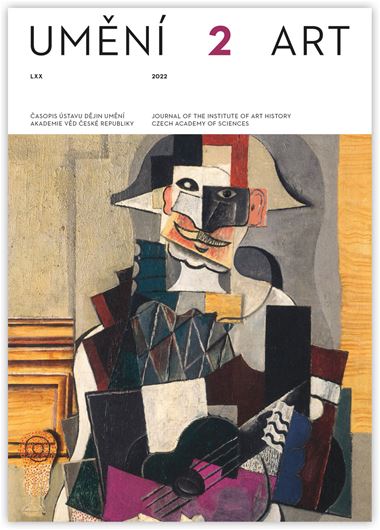Tomáš Valeš
The Drawing Work of Jan Kryštof Handke (1694–1774): New Observations and Attributions
The drawings of Moravian artists of the 17th and 18th century continue to be under-researched. One relative exception is the work of Johann Christoph Handke (1694–1794), who was based in Olomouc. To his hitherto known drawings we can now add several works that have been largely hidden in gallery collections as a result of mistaken authorial attributions (for example to the circle of Martino Altomonte). The works newly associated with Handke not only casts more light on the painter’s techniques in planning individual commissions, but also helps us to gain a better understanding of his use of particular sources of inspiration, above all prints. It shows an orientation to South German artistic production (J. G. Bergmüller) and is more evidence of the importance of this region for artists active in Moravia. The most important works newly attributed to Handke include first and foremost a drawing from the Albertina in Vienna that shows St. Francis Xavier administering the eucharist to the sick, which is a design for a painting for one of the fields in the Chapel of St. Francis Xavier in the former Jesuit Church of Our Lady of the Snows in Olomouc (1743). Handke’s authorship has also been confirmed in the case of the drawing Christ and the Blessed Virgin Mary Appearing to St. Augustine from the National Gallery Collections in Prague, which was previously linked with the Viennese painter Michelangelo Unterberger. In its conception Handke drew on Josef Haselbacher’s university thesis (1719), designed by Johann Georg Bergmüller. In relation to the already several times published drawing The Visitation of the Blessed Virgin Mary in Szépművészeti Múzeum in Budapest, by contrast, it has been demonstrated that this was not intended as a design for the Oratorium Marianum of Wrocław University, but was most probably connected with the decoration of the demolished Church of Our Lady in the Předhradí district of Olomouc.
Author's email:
111041@mail.muni.cz
DOI: HTTPS://DOI.ORG/10.54759/ART-2022-0204
Full-text in the Digital Library of the Czech Academy of Sciences:
https://kramerius.lib.cas.cz/uuid/uuid:6dad72fb-d641-4b94-892a-8c368b9d94d4
< back

